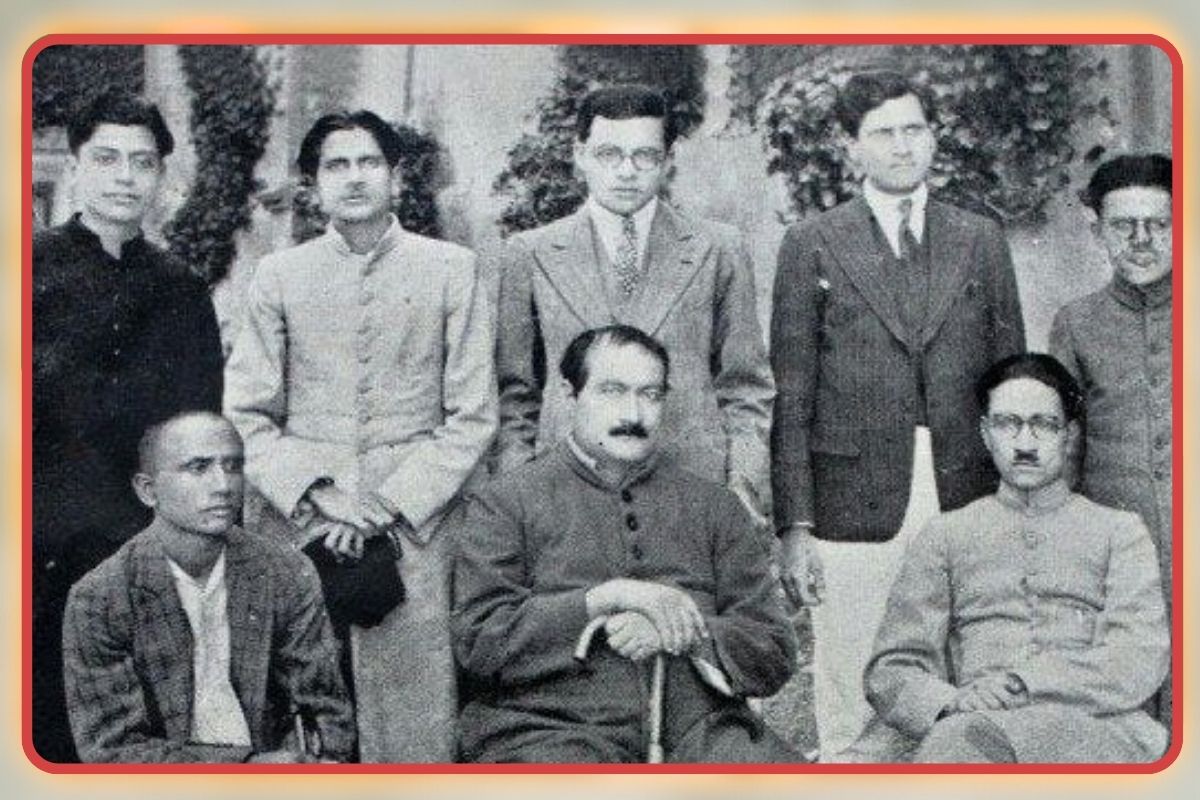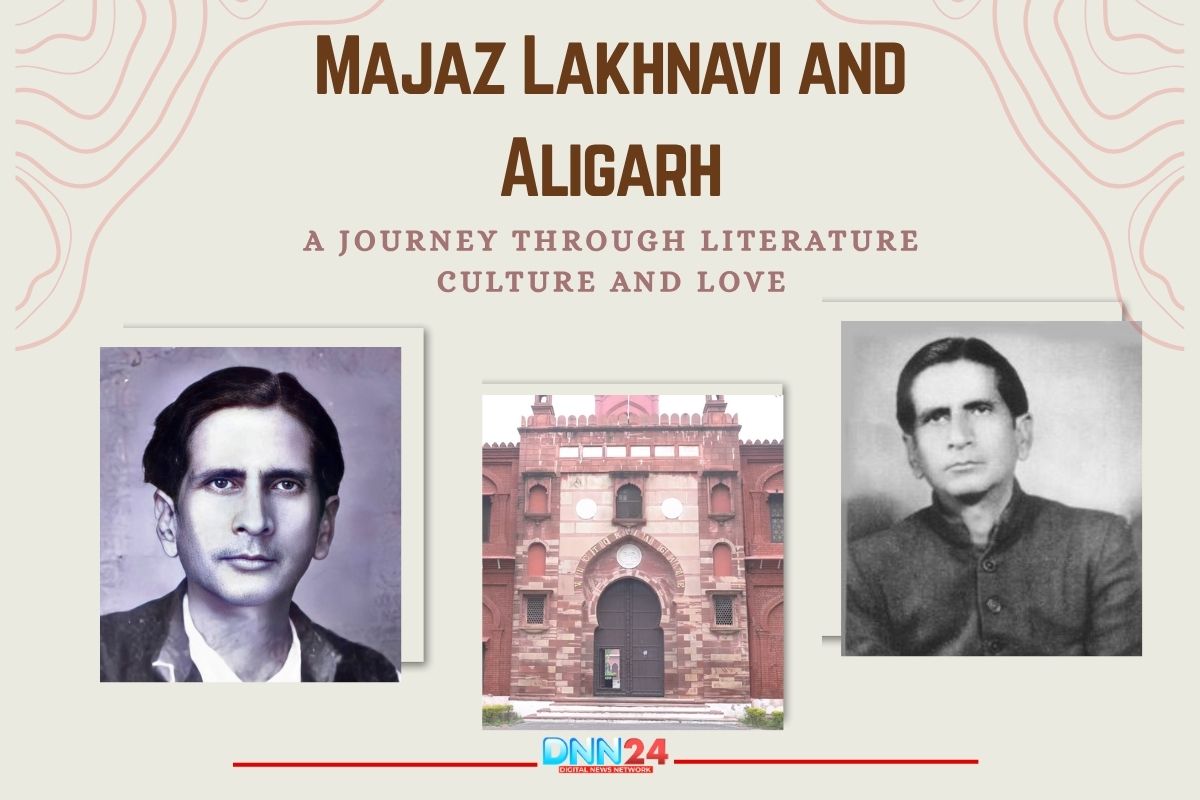Majaz Lakhnavi’s relationship with Aligarh resembled a romantic tale. He was both the lover and the beloved of this historic city. His wandering verses and the poetry that echoed through hostel corridors became the heartbeat of an entire generation of youth. Aligarh was more than a city for him. It was an emotion, a sanctuary, and the very foundation of his poetic identity. The young students who walked through the university gates found in Majaz’s words their own unexpressed feelings about love, rebellion, and yearning. His verses gave voice to their silent aspirations and turbulent emotions.
The disappointments and betrayals he faced in life added profound depth and romantic intensity to his poetry. Every corner of Aligarh Muslim University carried traces of his presence. The cafes where he sat, the library halls where he debated, and the pathways where he strolled became sacred sites for lovers of Urdu literature. Majaz did not simply study at Aligarh. He lived it, breathed it, and transformed it into immortal poetry. His famous poem ‘Nazar-e-Aligarh’, written in 1936, became the spiritual anthem of the university. Through his eyes, Aligarh was not merely an educational institution but a living, breathing entity with a soul of its own.
Majaz Lakhnavi : Aligarh’s Literary Heritage and Its Luminaries
Aligarh represents far more than a geographical location. It stands as a literary caravan that has illuminated Urdu poetry and refined cultural traditions for generations. This blessed land has produced countless celebrated poets, while Aligarh Muslim University has played a crucial role in giving Urdu literature its complete form and character. For centuries, the narrow lanes of this city have resonated with ghazals and nazms. The intellectual and cultural atmosphere of AMU, its book clubs, mushairas, and literary gatherings, has given birth to numerous poets and writers who shaped the course of Urdu literature.

The literary roster of Aligarh includes shining stars like Rahi Masoom Raza, Hasrat Mohani, Ali Sardar Jafri, Jan Nisar Akhtar, Shahryar, Kaifi Azmi, and Majrooh Sultanpuri. Among these illustrious names stands Asrarul Haq Majaz, known to the world as Majaz Lakhnavi. His revolutionary and romantic poetry captured the hearts of young people across the subcontinent. The colour and style of his poetry were direct results of Aligarh’s educational and literary environment. Aligarh Muslim University is not merely an academic institution. It is the Red Fort of Urdu literature and the cradle of civilisation and culture. Its atmosphere not only increased knowledge among students but also taught them humanity, refinement, and the art of building character.
Dr Shariq Aqeel’s Perspective on AMU’s Glory
Dr Shariq Aqeel shares his personal journey with AMU that began in 1982 when he qualified for the MBBS entrance examination. He spent nine years completing his MBBS and MD degrees before joining the University Hospital in February 1992. Today, he serves as Chief Medical Officer, a position he attributes to the intellectual and literary atmosphere of Aligarh. The University Health Service was established in 1901, and after AMU’s formation in 1920, it became known as the University Health Service. This hospital continues to fulfil the medical needs of students even today. Dr Aqeel emphasises that Aligarh Muslim University is not merely a structure of bricks and mortar.
It is the Red Fort of knowledge and literature, the Taj Mahal of culture and civilisation. Here, degrees are not the only output. Humanity and character are cultivated with equal care. The institution did not simply produce doctors, engineers, or lawyers. Sir Syed’s objective was to ensure that every student became dutiful, responsible, and deserving of justice. This holistic approach to education set AMU apart from conventional universities and created generations of individuals who excelled not just professionally but also as human beings with strong moral foundations.
Sir Syed’s Revolution in Modern Urdu Prose
Sir Syed Ahmad Khan initiated a major revolution by transforming the problematic and complex Urdu prose of his era into simple and accessible language. He used words that could easily reach vegetable vendors, roadside eateries, and rickshaw pullers. This is why he is called the founder of modern Urdu prose. His writings, especially ‘Tahzeebul Akhlaq’, focused on everyday life and social conduct. This gave Urdu literature a new and social dimension that connected with ordinary people. Dr Aqeel explains that four main elements were crucial in maintaining Aligarh’s literary atmosphere. First was Sir Syed’s sincerity and passion as the founder of the institution.
Second was hostel life, where students from different faculties lived together, studied together, and influenced each other’s thinking and culture. Third was the mentorship of teachers, as professors and educators remained with students around the clock, guiding them in literary and intellectual directions. Fourth was the literary environment itself, where mushairas, book clubs, and scholarly discussions ignited passion among students. These four pillars created an ecosystem where intellectual growth happened organically. Students were not just passive recipients of knowledge but active participants in shaping their own literary sensibilities and cultural values.

Majaz Lakhnavi: From Aligarh to Revolution and Love
Majaz’s connection with Aligarh was no less than a romantic legend. He was both the lover and the beloved of Aligarh. His wandering poems and the poetry echoing through hostel alleys became the pulse of youth. Failures and betrayals filled his poetry with depth and romantic passion. His poem ‘Nazar-e-Aligarh’, written in 1936, became immortal as a spiritual song for the university. Majaz’s quick wit and humorous style were also unmatched. The laughter and jokes that resonated in the gatherings at Cafe Foos remain examples of Aligarh’s culture even today.
He had the rare ability to blend serious political commentary with light humour, making his poetry accessible to both intellectuals and familiar readers. His verses about unrequited love touched millions of hearts, while his revolutionary poems inspired students to question social injustices. Majaz lived his poetry rather than merely writing it. His lifestyle, his friendships, his heartbreaks, and his rebellious spirit all became part of Aligarh’s folklore. Even decades after his death, students recite his verses with the same passion and reverence, keeping his memory alive in the collective consciousness of the university.
Literary Mushairas and Book Clubs at AMU
Aligarh’s literary atmosphere was not confined to poetry alone. Book clubs flourished in AMU’s old library hall and hostel libraries, where literary discussions continued regularly. Mushairas and literary events in earlier times were weekly or monthly affairs that became the lifeblood of students. Students listened to each other’s poetry day and night, critiqued it, and refined it through constant interaction. Dr Aqeel notes that the literary environment here not only inspired poets to write but also strengthened their resolve and conviction.
Aligarh has given Urdu literature countless bright stars. Hasrat Mohani, Josh Malihabadi, Majaz Lakhnavi, Ali Sardar Jafri, Jan Nisar Akhtar, Shahryar, Maulvi Abdul Haq, Rasheed Ahmad Siddiqui, Aalim Suroor, Khalilurrahman Azmi, Ismat Chughtai, Qurratul Ain Haider, Rahi Masoom Raza, and Khwaja Ahmad Abbas are among the luminaries. The ‘Wall of Fame’ mentions these great poets and writers so that the new generation can take pride in their ancestors. This tradition of honouring literary giants serves as a constant reminder to current students about the rich heritage they inherit. It creates a sense of responsibility to carry forward the torch of literary excellence and cultural refinement that their predecessors lit.
Literary Tradition in the Contemporary Era
In today’s commercialised world, where students rush to secure jobs quickly, the element of proper grooming and love for literature has diminished. Dr Aqeel observes that Aligarh still stands distinguished among many institutions. Its cultural heritage continues to shape student identity even today. His message is clear. Come to Aligarh, but do not come merely to obtain a degree. Come to become a human being. Connection with literature is essential. If you do not read literature, you cannot become a good person.
The spiritual relationship between Aligarh Muslim University and Majaz Lakhnavi teaches us that literature, knowledge, and culture are necessary for building any personality. On the soil of Aligarh emerged stars like Fazlul Hasan, Hasrat Mohani, and Majaz. This is the true blessing of Aligarh’s literary heritage, where poetry lives not just in the pen but also in the heart and in life itself. The challenge for current and future generations is to balance professional ambitions with cultural and literary pursuits. While career success matters, the cultivation of refined sensibilities and appreciation for art and literature remains equally crucial for creating well-rounded individuals who contribute meaningfully to society.
Also Read: Bilqis Zafirul Hasan: The Poet Who Found Her Voice in Silence
You can connect with DNN24 on Facebook, Twitter, and Instagram and subscribe to our YouTube channel.

